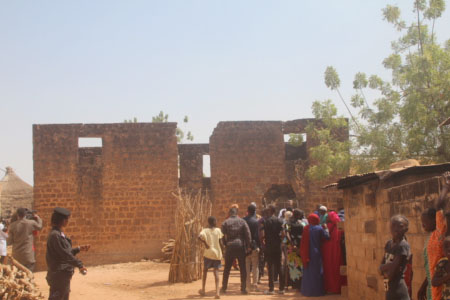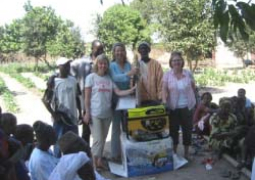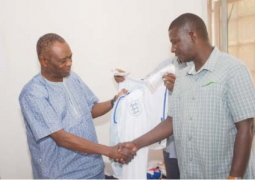
The
minister of Tourism and Culture, Hamat N.K. Bah has ordered the restoration of
two important places that are part of the history of the country.
The
two places are the Tambasangsang Fort, built in Tumana by the former colonial
masters and also the Kristikunda Old Settlement, a community established by
Anglican Church in Kantora, both in Upper River Region.
These
two places were among the sites visited by Minister Bah alongside his entourage
on the ongoing tourism facilities tour across the country on Friday 7 February
2020.
The
two places have been abandoned for a very long time, making the buildings
dilapidated and losing their originality.
Minister
Bah expressed that some tourists are interested in seeing them if they are
restored and the Gambia Tourism Board working with the National Centre for Arts
and Culture “can use it as part of their marketing products, as partnership
matter for the two departments.”
“Krisikunda
Old Settlement and Tambasangsang Fort also linked with our past great men who
had fought and worked for independence in this country, they suffered immensely
for The Gambia in the likes of John Jaw and Hassan Musa among others. They were
very modesty and never lived for money but only worked for national
development,” he noted.
Hassoum
Ceesay, director general of National Center for Arts and Culture, described
Tambasangsang Fort which was built in Tumana as a historic site in the Upper
River Region. He said it is an old trading station which is like the hub for
the groundnut trade. “The area is a riverside settlement so when the river
transportation declined, the river trading station also declined and with the
advent of road transport in the 60s. But the Fort used to be another hub for
the groundnut trade built during the era of groundnut boom and it was over 100
years old.”
Meanwhile,
the Kristikunda Old Settlement built in Kantora was an experimental site of the
Anglican Church to establish a Christian community in the Upper River Region as
the Christians worked in Fulladu. The Anglican Church also wanted to see if
they could use the place as base to educate and gain converts to Christianity.
“So Kristikunda was established as a self contained community in 1942 and made
available school, farm, animal husbandry, and poultry among other things.”
DG
Hassoum explained further that when the Anglican Church realised that they were
unable to convince the Fulani to convert and also not bringing their children
to study in the school, except children from Bathurst (Banjul) whose parents
thought their children were stubborn, they closed down the place in 1948: “Due
to the fact that when the experiment trail failed, the Anglican Church in
England refused to continue the subvention while colonial government also
refused to assist them.”
Later,
he disclosed, “the school was brought back in 1950s and so many of our pioneer
teachers taught here in the likes of Rev. J.C. Faye, Hassan Musa Camara, John
Jaw and some students of Krisikunda became very influential. He cited Professor
Njega Senghore, Alhaji M.C. Cham as products of the school. He added that the
school “had trained a lot of people in Banjul.”
Read Other Articles In Article (Archive)
Koriteh draws near
Aug 8, 2012, 9:24 AM



